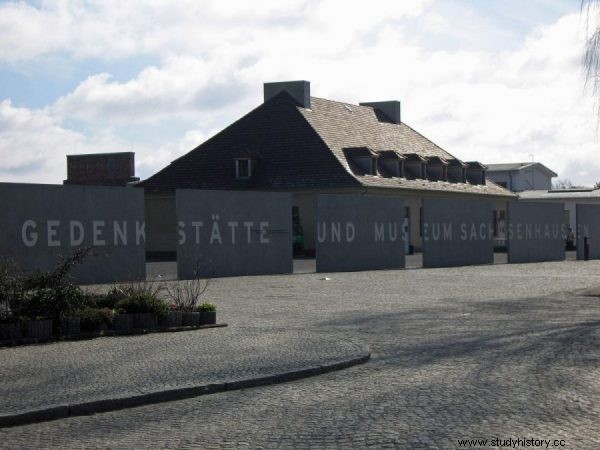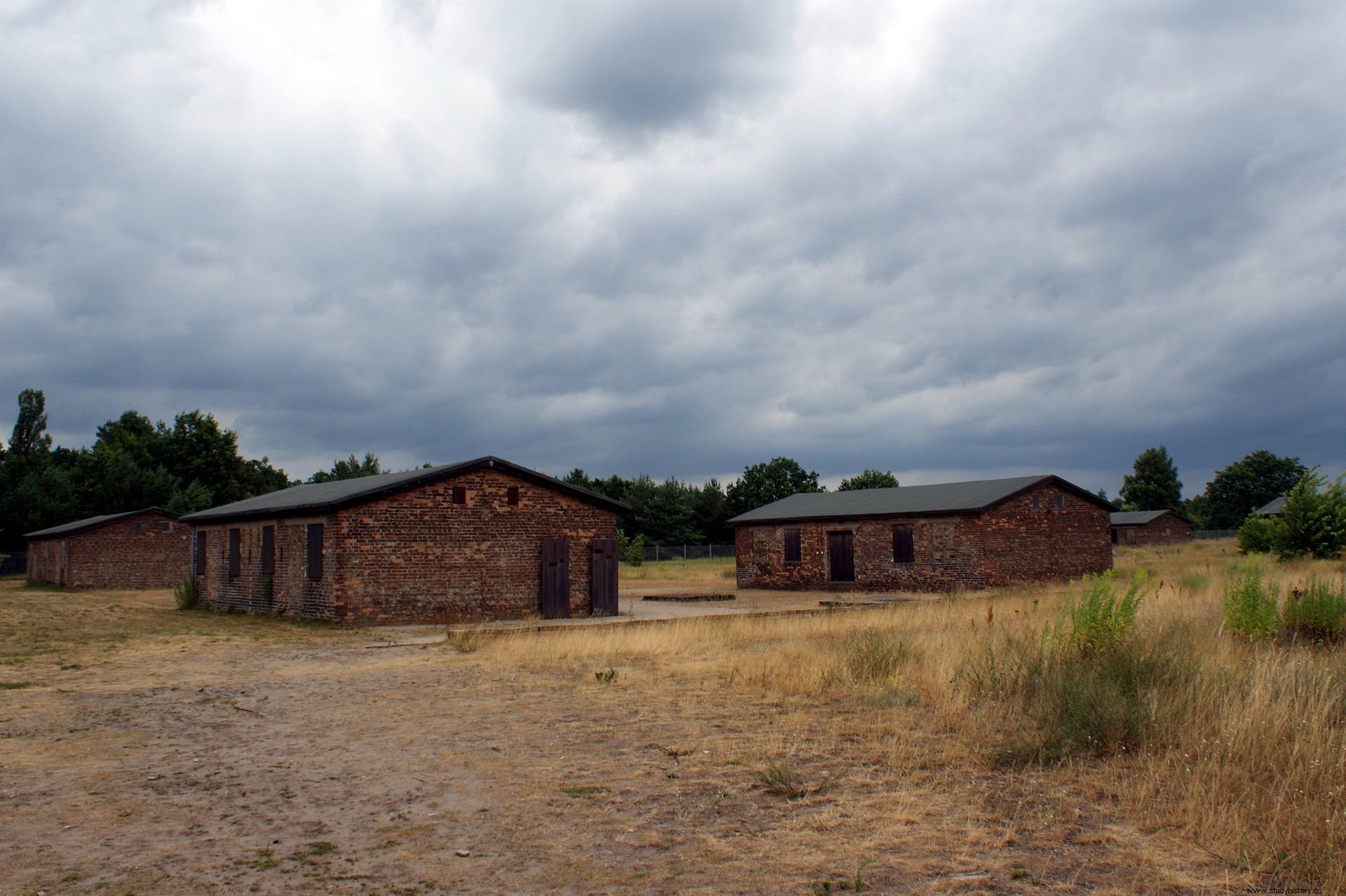The Sachsenhausen concentration camp was the most important administrative camp in the entire Third Reich . Everything that was wanted to be implemented in other concentration camps was first tested in Sachsenhausen.

Berlin had its first concentration camp in 1933, when on March 21 of that year, just two months after Hitler came to power, the Dachau camps, near Munich, and the Oranienbug camp, in the same city where the Sachsenhausen camp is located. The first camp built in Oranienburg was run by the SA, the party's stormtroopers. After their fall from grace after the night of the long knives in the summer of 1934, they lost the power to administer concentration camps, so the camp, which had been opened to stamp out political opposition in a former brewery abandoned in the center of the city, was closed.
Until August 1936 Berlin did not have a large concentration camp, that of Sachsenhausen. Since its opening, it became the mirror in which the rest of the camps that the Germans would open throughout the rest of Europe would be reflected. As one of its former commanders, Otto Koch, told a journalist in the 1940s "the Sachsenhausen concentration camp is the most beautiful in the entire Reich"
How to get to Sachsenhausen
To visit the Sachsenhausen concentration camp it is necessary to leave the city of Berlin and travel 35km north, to the city of Oranienburg. To get there by public transport there are two options:
- S-bahn line S1 . Oranienburg stop. This is the most reliable option, since the line runs through the entire center of Berlin and has a frequency of 20 minutes. The most central stops are Potsdamer Platz, Brandemburger Tor and Friedrichstrasse. You can consult the transport map of Berlin HERE to see the whole line
- The second option, faster but less reliable, is to take the RE5 regional train line address Rostock. This train only takes 25 minutes to get to Oranienburg from the center of Berlin, but it usually has quite a few delays and, especially in summer, it is always full due to the Berliners who take it to spend the day on the Baltic beaches. The RE5 can be taken at Potsdamer Platz, Hauptbahnhof or Gesundbrunnen. You can check the schedules HERE.

Once at Oranienburg main station, the memorial is 1,800 meters away. You can walk there, following the signs. This route was the one carried out by the prisoners in 1936, since in the first months of the camp's existence, the SS took the prisoners by train to the same station that exists today, and marched them in broad daylight through the center of the city, in full view of the civilian population, who approached the groups of prisoners to rebuke and insult them. Along the way to the memorial you will find signs with information about these transfers.
Opening hours
March 15 to October 15 – 8:30 a.m. to 6:00 p.m. – Monday to Sunday
October 15 to March 15 – 8:30 a.m. to 4:30 p.m. – Monday to Sunday

Visit the Sachsenhausen concentration camp
The Sachsenhausen concentration camp is one of the worst preserved in Germany. Only 13% of the buildings are still standing. Although we usually think that the camps were destroyed in order to hide what happened there, this is not true, since the destruction of the camps occurs by the liberating armies in the weeks after their arrival.
Today we can think that the first objective of the allies would be to preserve those places to show them to the world, but the first concern of the armies that arrive in the fields is to attend to the survivors, get them out of those places as soon as possible and prevent plagues originating in those unhealthy places. That is why in Sachsenhausen there are no wooden buildings, but brick ones.

As soon as they arrive, the visitor will be able to enter the old armory, where there is a small bookstore and public toilets. You can also hire a guide for a 2-hour tour or an audio guide.
From this point, the route runs through the former SS officer training academy, now the Brandenburg federal state police academy; the command area with the commander's house, tower A and the museum erected by the German Democratic Republic in the 1960s; the magazine yard and the security fence; the prisoners' barracks; the prison of special cells; the exhibition of the kitchen; the main monument of the GDR memorial; the execution zone and the medical and experimentation area with the prisoners.

Between 1945 and 1950 the Sachsenhausen camp became Special Camp No. 7 of the Soviet Union. This camp was used to lock up prisoners and war criminals and possible dissidents within the occupation sector of the USSR. Both a permanent exhibition and several barracks from the period can be visited by exiting at the far end of the Sachsenhausen memorial.

Recommendations
- Entrance to the memorial is completely free . No need to book or show up if you just want to visit the course on your own.
- To make the most of your time, you can hire an audio guide for €3 or hire a group tour . Although the audio guide contains a lot of information, it is outdated and the pace of the information is very slow, so it becomes tedious to listen to it for more than an hour. There are tours offered by the Sachsenhausen foundation on certain days and from Berlin different companies offer tours in Spanish every day at similar prices. Guided tours typically last between 2 and 2.5 hours inside the memorial grounds.
- In Germany, the former concentration camps are places of remembrance and educational places in which they try to maintain as much solemnity as possible . There are no bars/restaurants inside nor will we find souvenirs, although there is a well-stocked bookstore with books on the theme of the Third Reich. There is a small cafeteria inside the headquarters museum. The foundation that administers this memorial publishes private books on this field. There are several translated into Spanish. Ask the staff at the counter and they will tell you where they are.
- Although admission is free to anyone, children under 13 are discouraged from visiting due to the harshness of the exhibits. The entry of children is under the responsibility of their parents or guardians .
- In Sachsenhausen there are several rules of conduct:
- Dogs and bicycles are not allowed.
- Smoking is not allowed in the entire memorial, even if they are outdoor spaces.
- The consumption of alcoholic beverages is not allowed.
- Eating inside the memorial is allowed, but discouraged as it is legally a cemetery.
- Photographs are allowed throughout the tour. In the kitchen museum, photographs can only be taken without flash.
- Political symbology of any kind is not allowed, nor is it allowed to enter the memorial with flags or banners. For acts of protest or remembrance, it is necessary to contact the address of the memorial.
